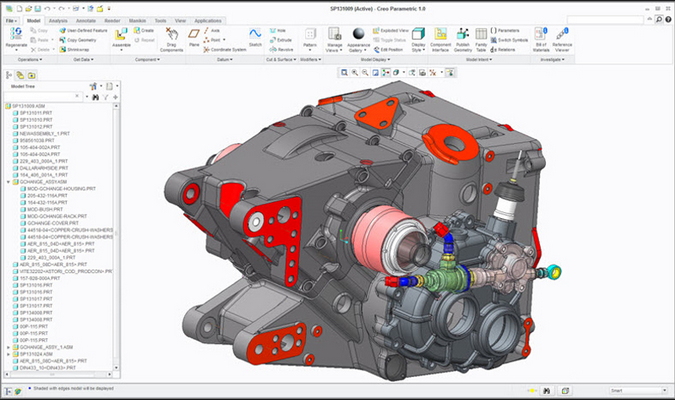 Having to use a CAD tool that doesn’t match your needs isn’t just frustrating; it can lead to serious problems with your product development. Think about it, if you have an unsuitable tool, delays and mistakes become almost inevitable.
Having to use a CAD tool that doesn’t match your needs isn’t just frustrating; it can lead to serious problems with your product development. Think about it, if you have an unsuitable tool, delays and mistakes become almost inevitable.
While there are many different CAD tools available, it’s important to find the right one for your needs. One that blends together all of the functionality you require with advanced features, that allows you to design your products as you want them to be. Market pressures mean that designers and engineers need to complete projects quickly, without sacrificing quality or detail.
How does Creo Parametric make this possible?
It is not just what Creo Parametric offers in terms of modeling, but how you can seamlessly share your data with any other PTC Creo apps that you have. This provides a much quicker and cleaner way of coordinating 2D and 3D designs, while keeping the design’s integrity. For projects where you will need to convert between the two, you will save on time and expense because you will not be bogged down in translation and verification.
Depending on your needs, the software has a number of innovative features that can significantly simply the typical design process. You can find the full details by downloading the Creo datasheet. But, here are five examples of additional features that can help you succeed more quickly.
- When working with a sheetmetal part, the addition of the Flat Pattern Preview window lets you see the 3D model and 2D model side-by-side. Simply click on the icon and you can quickly get a preview of the flat version of an object.
- The Drawing Table Gallery lets you take existing drawing tables and saving them for later. You can set these tables as part of a standard or pin them to a certain area for quick reference.
- The Measure feature can be displayed by default, or you can collapse the panel to work around the 3D object. From the one screen you can run comparisons on two references based on annotations you’ve made.
- Cross sectioning has been simplified from the original versions of the software. Colour coding lets you highlight specific elements. Or you can manipulate the drawing against the X, Y, or Z access as needed. Spending a little time playing with the updated features will quickly show how much quicker you can model objects through cross sectioning.
- A new search function for the Model Tree lets you looks for components based on a string, making it much quicker to locate all similar components as long as you have an idea of what they are called. If you are not certain, there you can use the wildcard character to pull up a larger range of components and then narrow it down.
Want to find out more about Creo Parametric? Download our eBook: 12 Reasons to Upgrade to Creo Parametric 2.0
